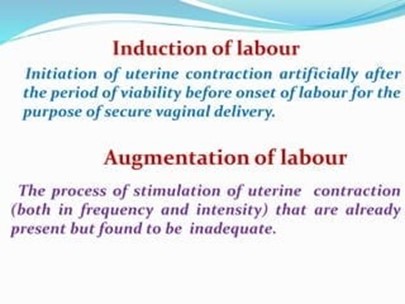A term multigravida, who is receiving oxytocin IV for labor augmentation, is requesting pain medication. Review of the client's record indicates that she was medicated 30 minutes ago with butorphanol 2 mg and promethazine 25 mg IV push. Vaginal examination reveals that the client's cervical dilation is 3 cm, 10% effaced, and at a 0 station. Which action should the practical nurse (PN) implement?
Coach the client to take slow, deep breaths during each contraction.
Report to the nurse that the client needs another dose of butorphanol.
Notify the healthcare provider.
Discontinue the oxytocin infusion.
The Correct Answer is A
In this situation, the practical nurse (PN) should coach the client to take slow, deep breaths during each contraction. The client has already been medicated with butorphanol and promethazine for pain relief and it may not be appropriate to administer another dose at this time. Instead, the PN can provide non- pharmacological pain relief measures such as coaching the client to use breathing techniques to help manage the pain during contractions. The other actions listed may also be appropriate in some situations, but coaching the client to use breathing techniques is the most appropriate action in this situation.

Nursing Test Bank
Naxlex Comprehensive Predictor Exams
Related Questions
Correct Answer is A
Explanation
Newborns have a stump of the umbilical cord attached to their belly button which eventually falls off within 1-2 weeks. During this time, it is important to keep the area clean and dry to prevent infection. The PN should instruct the parents to clean the area with water and a clean cloth or cotton swab, and then gently pat the area dry with a clean towel. The parents should also be advised to avoid using any harsh soaps, lotions, or alcohol on the cord stump, as this can cause irritation or delay the healing process. It is not recommended to cover the cord stump with a sterile dressing unless specifically instructed to do so by a healthcare provider.

Correct Answer is D
Explanation
To help increase an older adult's magnesium level following a hysterectomy, the practical nurse (PN) should suggest that the client increase her intake of protein in fish. Fish is a good source of magnesium, which is an essential mineral that plays a role in many bodily functions. Increasing the intake of magnesium-rich foods such as fish can help raise the client's magnesium level and improve her overall health. The other foods listed may also provide some nutritional benefits, but fish is the best choice for increasing magnesium intake in this situation.

Whether you are a student looking to ace your exams or a practicing nurse seeking to enhance your expertise , our nursing education contents will empower you with the confidence and competence to make a difference in the lives of patients and become a respected leader in the healthcare field.
Visit Naxlex, invest in your future and unlock endless possibilities with our unparalleled nursing education contents today
Report Wrong Answer on the Current Question
Do you disagree with the answer? If yes, what is your expected answer? Explain.
Kindly be descriptive with the issue you are facing.
